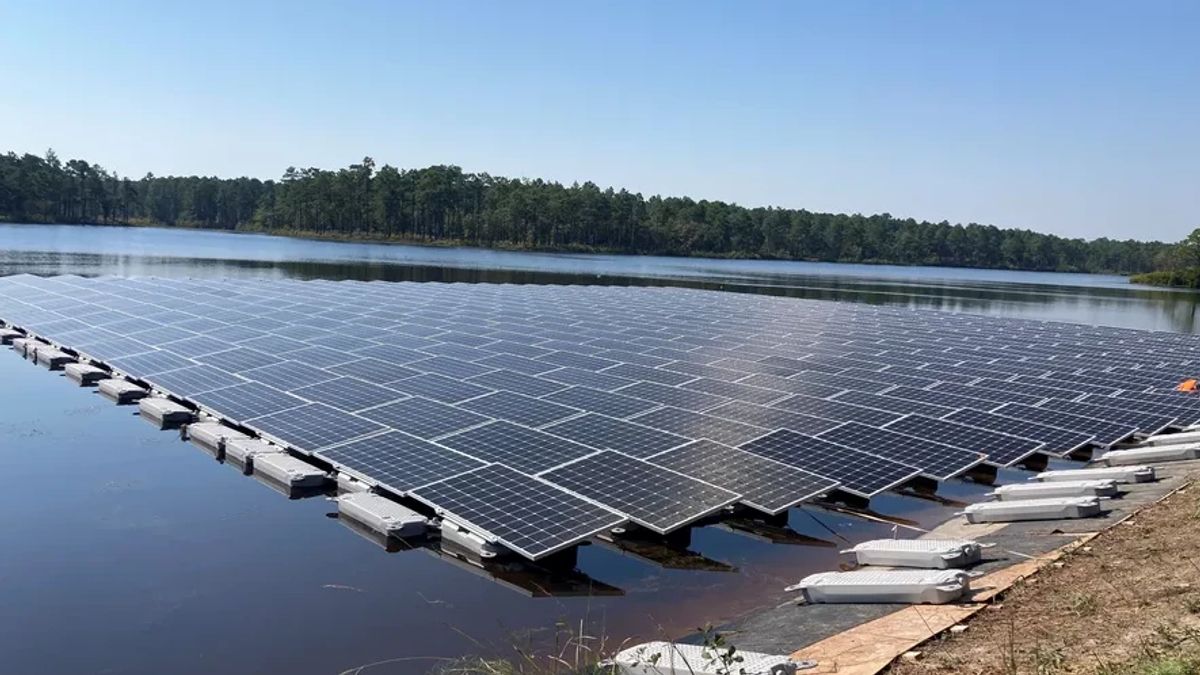JAKARTA - Floating solar, was in the spotlight this weekend when the US Army unveiled a new solar power plant. This floating power station is located above Big Muddy Lake at Fort Bragg in North Carolina.
It is the first floating solar array to be used by the Department of Defense, and is part of a growing support stream in the US for “floatovoltaics.”
The US Army says its goals are to increase clean energy, reduce greenhouse gas emissions, and provide nearby training facilities for backup energy sources during power outages. The panels will be able to generate about one megawatt of electricity, which can typically power about 190 homes.
The installation, the largest being in the US Southeast, is a huge win for floatovoltaics, which is yet to make a big splash in the US. According to Duke Energy, they only make up 2 percent of the country's solar installations each year. They collaborated with Fort Bragg and renewable energy company Ameresco on the project.
The cost for the manufacture of floating diesel is usually slightly more expensive than its land-based counterparts. These solar panels are placed on a kind of raft that is tethered to the bottom of a body of water. But floatovoltaics comes with unique benefits.
Hotter temperatures make it harder for solar panels to generate that much power from the same amount of sunlight. Fortunately, sitting on the water has a cooling effect, allowing the panels to generate more electricity than panels on land.
This technique makes floating solar more efficient and compensates for higher installation costs over time.
While diesel is generally the cheapest source of electricity globally, it requires a large area of land. A solar field may require 20 times as much land as a fossil-fuel power plant to produce the same gigawatt of electricity.
Solar projects in the US have been in conflict with some farmers wanting to use the same land. For example with some conservationists who are concerned about their impact on desert ecosystems.
Floatovoltaics, on the other hand, may be able to avoid some of these tensions. In the US, they are more commonly used in man-made bodies of water such as reservoirs or canals. These are easier to build and less likely to have a major impact on sensitive ecosystems like installations built in natural ecosystems like deserts.
These installations cover only 10 percent of the world's hydroelectric reservoirs with floatovoltaics able to generate as much electricity as all the world's operating fossil fuel power plants combined.
This is as the researchers pointed out in a recent commentary in the journal Nature. An added benefit is that the panels reduce evaporation. This is a particularly important feature in dry areas where water levels drop rapidly. Drought-stricken California is even starting a project to line their irrigation canals with solar panels.
All of this could potentially help solar gain a stronger foothold in the US. Solar currently generates less than 3 percent of the electricity mix in the US. Wind power accounts for about three times as much electricity in the US. But floating solar power plants have made a splash outside the US, especially in places with less abundant soil, like Japan.
All renewables need to be drastically scaled up to meet US and global climate targets. The Joe Biden administration has set targets to achieve 100 percent clean energy grids by 2035 and achieve zero greenhouse gas emissions by 2050.
That is what is needed globally to achieve the targets agreed by much of the world under the Paris climate accord.
The US Department of Defense is one of the biggest polluters on the planet, with the US military releasing more greenhouse gas emissions each year than about 140 countries.
So the new floating solar power plant at Fort Bragg is urgently needed as a clean energy source. In February, the US Army released its own "climate strategy" to achieve net zero emissions by the middle of the century.
Tackling climate change is also in the military's personal interest. "For the foreseeable future, climate impacts will disrupt Army activities," said the army's climate strategy, as quoted by The Verge. That includes potential power outages.
Fort Bragg's new floatovoltaic array is also equipped with a 2-megawatt battery for such emergencies. For example, if a storm shuts off electricity in the area. The Army wants "sufficient renewable energy generation and battery storage capacity to sustain its own mission criticality" in all of its installations by 2040.
The English, Chinese, Japanese, Arabic, and French versions are automatically generated by the AI. So there may still be inaccuracies in translating, please always see Indonesian as our main language. (system supported by DigitalSiber.id)













